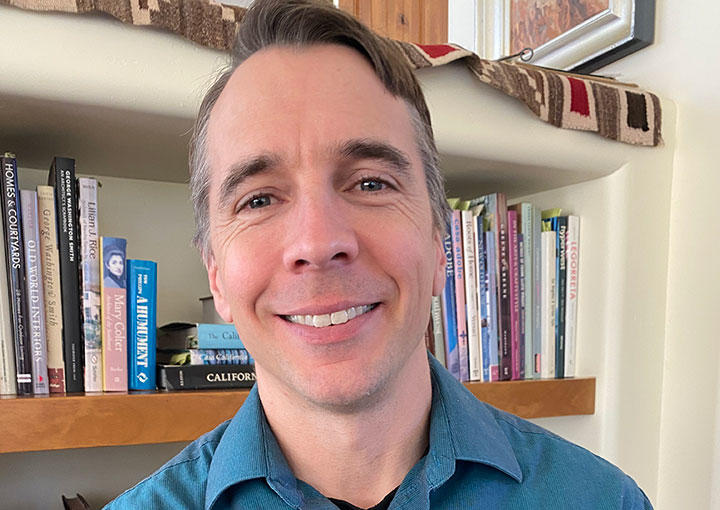Richard Rusczyk ’93 Fosters Resilience, Curiosity Through Challenging Math Problems
It’s a question that Richard Rusczyk ’93 has spent much of his life trying to solve.
“Every little child knows how to do it,” says Rusczyk — a former USA Math Olympiad champion, recipient of the Paul Erdős Award for innovation of math challenges, and founder of Art of Problem Solving (AoPS), a company that develops educational tools for math students. Preschoolers are surrounded by new problems, he explains — problems so overwhelmingly difficult that they sometimes yell and cry and throw tantrums. But they keep trying.
“A 4-year-old hasn’t learned to quit,” he says. “A big part of solving problems you’ve never seen before is retaining that resilience.”
Many of us abandon this approach when we grow older. Rusczyk attributes this in part to our education system, which incentivizes students to absorb and regurgitate material rather than master it. Hard-working students can ace their way through high school without confronting new problems — and when they finally face one, they often shy away from it.
Through AoPS, Rusczyk seeks to expose students of all ages to problems that challenge their understanding of fundamental concepts. His company provides demanding math curricula and instructors who encourage students to ask for help. It also offers a community of peers who are being similarly challenged, so that students learn to be comfortable stretching themselves.
“This is the sort of training one has to go through to get to the edges of any sort of intellectual discipline,” he says. “It’s not just math. It’s not just computer science or economics. It’s writing. It’s philosophy. It’s anything you want to do.”
Rusczyk began developing educational resources at Princeton, after he realized that the math competitions he had participated in during high school had prepared him well for the rigors of college. He and Sandor Lehoczky ’94 co-created national math competitions for high school students. And when the scores came back low, they decided that rather than make the tests easier, they would write a math textbook to help students prepare. By the time Rusczyk graduated, they had co-authored two textbooks — the first of many The Art of Problem Solving books they would write together.
Today, AoPS offers an online school, in-person learning centers, and a constellation of online applications, in addition to textbooks. It also boasts an active 300,000-member online community. The 2018 MIT admit class circulated a spreadsheet in which to share usernames for five social media platforms: Facebook, Instagram, Twitter, Snapchat, and AoPS. After 20 years without a win, the U.S. has won four of the past five International Math Olympiads — and all of the 22 members of those teams are or were AoPS students.
READ MORE Professor and Coach Po-Shen Loh *10 Challenges Rising Mathematicians
But while AoPS has done a great deal to advance top math students, Rusczyk is concerned that it remains inaccessible to talented students who lack resources or mentors.
“You see a growing gap between well-connected, high-ability, high-interest kids, and those high-ability, high-interest kids who are not well-connected,” he says. “We wanted to address this problem by trying to find a way to give those students access to the same sorts of materials and opportunities that had inspired us.”
In 2011, Rusczyk and Lehoczky started the Bridge to Enter Advanced Mathematics (BEAM), a program for gifted but underserved students. BEAM offers summer programs and mentors students through high school and the college application process. It is now partnering with schools and community organizations to offer AoPS online materials to elementary schoolers.
One of BEAM’s early students, Kadija Benoit ’23, just began her freshman year at Princeton.
“I didn’t think about college until I was with BEAM,” says Benoit, whose parents immigrated to the Bronx from Mali. “BEAM showed me that there was more to my capabilities, and more to life, than what I saw around me.”
Benoit feels grateful to BEAM for helping her explore her passion for STEM without placing a financial burden on her parents.
“It was really cool to be surrounded by a group of students who were also passionate about academic exploration,” she says. “To truly be yourself: your inner nerd.”












No responses yet